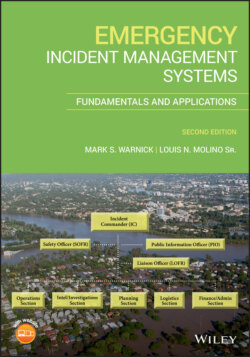Читать книгу Emergency Incident Management Systems - Mark Warnick S., Louis N. Molino Sr - Страница 28
1.4.9 Lack of Accountability
ОглавлениеDue to the complexity of most major incidents, and the inherent danger of multifaceted operations, being able to account for all personnel was, and still is, important. When a command structure was in place, agencies or one team of an agency, might freelance. Often, no immediate supervisor was assigned to documenting where each individual was assigned, what they were doing, and how they were doing it.
If a disastrous incident within the operational theater were to occur, the ability to account for each individual was compromised. This occasionally led to individuals unnecessarily being put in harm's way. It was not uncommon for someone to be injured or killed, and nobody was aware of it until much later. It also led to individuals being left behind when an evacuation was ordered, or when the operations ceased.
In 1972, a commission was formed by then President Richard Nixon. The National Commission on Fire Prevention and Control was formed to investigate how to reduce fire deaths, including firefighter fatalities. That commission released a report called America Burning. Among the many findings by the commission, two specific recommendations stand out, in relationship to accountability. The first was to create an administration to oversee and support firefighters, the second was to reliably record Line of Duty Deaths (LODDs) of firefighters. In 1976, the US Fire Administration was founded, and firefighter fatalities began to be credibly reported on 1 January 1977. Prior to 1977, there were not any credible numbers of how many firefighter fatalities were suffered each year. For the calendar year of 1977 there were 157 firefighter fatalities, and in 1978 there were 174 firefighter fatalities. Comparing this to firefighter fatalities statistics in 2016, the death toll fell to 69 (FEMA, 2018a).
